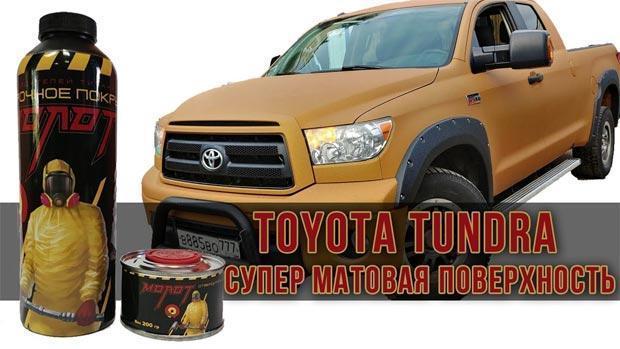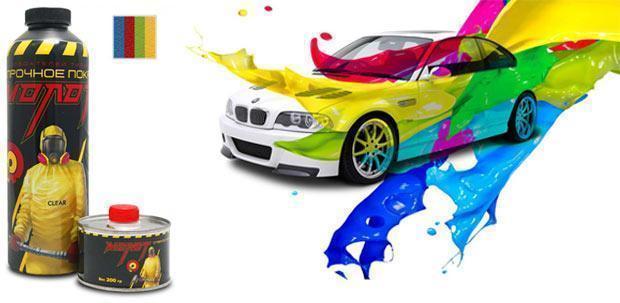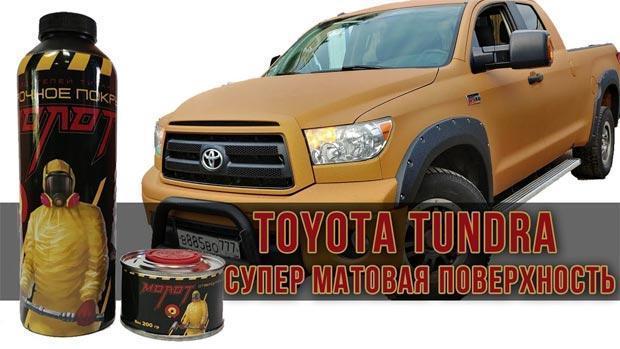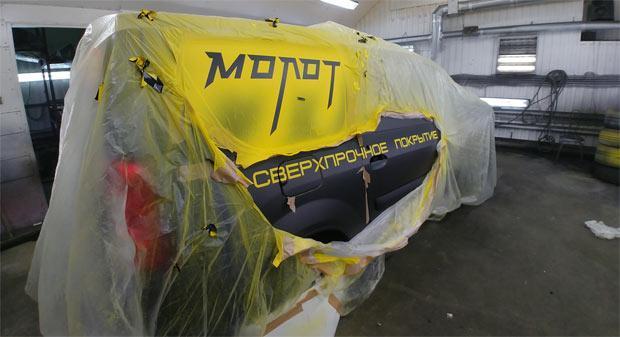
Heavy-duty coating "Hammer". New from Rubber Paint
Features of the composition and properties
Rubber paint is used in a variety of applications and can be applied to wood, metal, concrete, fiberglass and plastic surfaces. The paint is available in different colors and can be applied in various ways - by brush, roller or spray (only the first method is used when painting cars).


Like other compositions of similar use based on polyurethane - the most famous coatings are Titanium, Bronekor and Raptor - the paint in question is made on the basis of polyurethane. The addition of polymer vinyl chloride to the polyurethane base significantly increases the strength of the coating, which in this case is not so much decorative as protective. In particular, the composition of Liquid Rubber, when dried, forms a membrane up to 20 microns thick on the surface of the material. The same advantages distinguish the Hammer coating:
- High elasticity, which allows the use of paint on surfaces of complex shapes.
- Moisture resistance over a wide temperature range.
- Inert to aggressive chemical compositions, both in liquid and gaseous phases.
- UV resistant.
- Resistance against corrosion processes.
- Resistance to dynamic loads.
- Vibration isolation.
It is clear that such qualities predetermine the effectiveness of the Hammer paint for cars and other transport equipment operated in difficult conditions.


Special fillers are also introduced into the Hammer coating, which increase the service life of the product and increase the resistance to rust formation.
Mechanism of action and application sequence
All compounds of the Rubber Paint class are, in fact, primers that cover possible surface pores where moisture can enter. The presence of chlorine salts in fillers gives the paint increased corrosion resistance in humid climates - a quality that is not characteristic of many traditional coatings. True, after application, the surface acquires a matte color.
The technology for treating cars with a protective coating Hammer varies depending on the amount of work. For example, in industrial applications, the paint is poured into a mixer and mixed thoroughly to prevent settling of the product, which has a significant density. Stirring is carried out until a homogeneous state is obtained. For small volumes of use, it is enough to vigorously shake the container several times.


Paint Hammer for cars is applied in at least two steps, with a thickness of each layer of at least 40 ... 60 microns. With the contact method of application, it is advisable to use a tool with a ceramic coating, which is characterized by a low moisture absorption coefficient. The curing time is minimal and the yield ratio approaches 100%. After each treatment, the surface must be dried for 30 minutes, after which the next layer must be applied. Final drying is carried out for at least 10 hours. With an average coating thickness of 50 microns, the specific consumption of Molot paint is about 2 kg per 7 ... 8 m2.
The shelf life of the product is no more than six months. When approaching the deadline for storage, when the product has thickened, it is possible to add up to 5 ... 10% thinner to the Rubber Paint class compositions (but not more than 20%).


The treatment of the previously cleaned and dried surface must be carried out with rubber gloves. The application process should be carried out evenly and quickly so that all sides of the surface dry at the same time, and do not contain bubbles of the wet rubber coating. For anti-corrosion protection of small parts, they are treated by lowering them into a container with a ready-to-use composition.
If the treatment with a protective coating Hammer is carried out in professional conditions, then it is necessary to be guided by the following indicators of the quality of the finished surface:
- Thermal resistance of the outer layer, °C, not less than 70.
- Shore hardness - 70D.
- Density, kg / m3, not less than 1650.
- Water absorption coefficient, mg/m2, no more than 70.
All tests must be carried out according to the methodology given in GOST 25898-83.


Watch this video on YouTube

